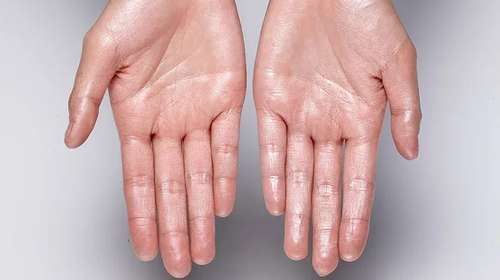Winter is upon us and patients will start asking some great questions: Do I need to change my skincare routine in winter? Can I leave out some things, like sunscreen, now that it’s not sunny anymore? How should I deal with keeping my skin clean in winter?
We answer these questions every year, as the weather turns and we rescue warm coats and boots from the closet. In this post, we’ll tell you everything you need to know to protect your skin against the cold, windy weather. Let’s start with a classic.
Do I need sunscreen in winter?
If you don’t work in the field, it’s a fair question. Especially if you live somewhere extremely cold, patients might struggle to put two and two together. It’s counterintuitive, but of course, you can actually have a greater need for sunscreen in cold weather.
If we just tell our patients that, without providing context, they’ll nod and say thanks, and get some advice that makes more sense to them somewhere else. Understanding is better than believing. And how many of our patients really understand what’s going on when they put sunscreen on, anyway?
Sunscreen protects your skin against damage from ionizing ultraviolet radiation. When ultraviolet radiation hits your skin they knock little pieces out of your DNA and make skin cells die or reproduce themselves incorrectly, which is even worse; this is how skin cancers develop, and it’s why having sunburn just once can increase your risk of skin cancer measurably. It’s always a good time to lean on this point, because of the ‘it won’t happen to me’ effect.
Trouble is, we don’t have any real-time way to know if our skin is receiving UV rays. This is where it gets confusing for someone who associates summer with sunscreen and winter with scarves. Because in summer, it’s easier to spot: you’re out in the sun, and you’re hot. It makes sense that you need sunscreen. But in winter, your skin might be cold.

There’s no built-in warning system, and it seems counterintuitive to get burned in the cold, but it’s important to make the point: sunburn isn’t a heat burn; it’s a radiation burn. You can get sunburn, even in subzero temperatures; you can get sunburn off snow, from the reflected UV rays. Astronauts get sunburned in space. Even if you escape a burn your skin is still being damaged by those UV rays, resulting in a condition called ‘photoaging’ which is exactly what it sounds like: your skin being aged by sunlight.
You can get cold damage and wind damage and sunburn, all at once. Bottom line? You basically always need sunscreen, and while it’s one of the most robustly-supported lifestyle interventions in the world, period, we could all use a reminder.
What sunscreen should I recommend my patients wear in winter?
Winter sunscreens should be broad-spectrum, protecting you against both UV-A and UV-B radiation, and they should offer at least SPF (Sun Protection Factor) 30.
Beyond that, it’s about your patients’ unique needs. For example, if they’re active outdoors or in winter sports, they’ll need a specialized water- and sweat-resistant sunscreen. You probably have favorites, or suppliers can point you to the right options in their offerings. If they’re active in the snow — especially if they’re skiers and snowboarders — they’ll benefit from an even higher SPF, at least 50, to protect against reflected as well as direct light.
Here’s a how-to checklist for patients who are on board with sunscreen but need extra guidance:
- Apply sunscreen to all exposed skin, even your lips
- Put sunscreen on at least 20 minutes before you go outside
- Remember to protect the underside of your chin and nose from reflected UV rays
- Reapply sunscreen at least every two hours, more frequently if you’re sweating
- Avoid sunscreens with the ingredient octocrylene
Do I need moisturizer in winter?
Just like with sunscreen, the answer is a very definite yes. The colder the climate, the greater the skin’s need for moisturizer. Again, this one is counterintuitive for people who associate summer with warmth and thirst, but not winter. But you can lose more water to evaporation by breathing on a cold day than by sweating on a hot one. Once more, it’s better if patients understand us than if they believe us, so here’s how to sell them on moisturizer (and hydration) in winter.
All other things being equal, cold air is dryer — even when the relative humidity is higher, because relative humidity doesn’t measure the amount of water vapor in the air. It’s a measure of pressure. (If you’d like to see under the hood of the science behind this, check out this guide to air moisture.)
This cold air warms up in your lungs and suddenly acquires the ability to hold more water, which it picks up from the surfaces of your breathways. That’s one reason why cold air can hurt when you breathe it in.
Evaporation works the same: our skin loses moisture to the air when it’s warmer or wetter than the air. That’s how sweating works, but the process is going on all the time. When the air is cold, it’s dry, and you constantly lose moisture from any exposed skin — usually your hands and face. If it’s wet or windy the process is even more severe.

The same process that gives you chapped knuckles can also damage the skin on your face, making it drier, less flexible, and more prone to cracking. It accelerates skin aging; it also leaves you open to breakouts as your skin produces more oils to try to compensate. The chances are that you’ll see negative changes in days after a cold snap if you’re not using an appropriate moisturizer, so that’s the takeaway: you can see the results in the mirror in days.
What moisturizer should you recommend patients wear in winter?
The best winter moisturizer for you depends partly on skin type:
- Oily skin indicates lighter, water-based moisturizers that won’t contribute to buildup of oils
- Dry skin means something heavier and thicker with more oils, such as a petroleum-based moisturizer — but be careful to apply sparingly
- Patients with normal skin can use lighter, water-based moisturizers
- Sensitive skin is best suited to moisturizers with soothing ingredients like aloe or chamomile to help with irritation from cold, dry winter air
- Older or damaged skin needs a heavier, petroleum-based moisturizer to protect it from the elements
If you’re talking with someone who’s active outside or the winter is especially severe, encourage them to consider using a petroleum-based moisturizer as a barrier, especially on parts of their face that bear the brunt of the wind, like the nose, brow, and cheekbones.
Do I need a cleanser in winter?
Cleansers are essential in winter just as much as any other time of year. Without cleansers, oils and atmospheric pollutants can build up on the skin, causing everything from allergic reactions to breakouts, infections to inflammation. The reasons for using cleansers don’t really change year-round, but it doesn’t hurt to underscore the need when you’re answering patients’ questions.

What cleanser should I recommend patients use in winter?
Foaming or astringent cleansers are popular — they quickly and efficiently strip away oils, and they make you feel like cleansing is going on. But stripping away your skin’s natural oils isn’t necessarily what you want. Astringent cleansers with salicylic acid or foaming agents can dry the skin, leading to irritation and inflammation. Patients often don’t want to hear this, after a lifetime of learning that ‘foaming = cleaning,’ but paradoxically, highly astringent cleansers can actually stimulate oil production and make skin conditions like acne worse.
The solution? Encourage patients to try an oil-based cleanser. It’s not as well known as it should be that oils are often just as good at cleaning your skin as detergents. They’re also kinder and gentler. So with dry skin the main threat in winter, get as many people as possible to switch their cleanser to a balm, serum, or oil. They’ll thank you for it when you see them next!
Do I need an exfoliant in winter?
You can get by without one, but it’s best not to try to. We think of winter as harsh, drying. Instinctively we want to protect our skin. So some patients may be unsure if they still need an exfoliant when the wind is howling outside, and others may simply not know how to choose one or how to get the best out of the one they use.
Here’s how to explain it. The main reason to use an exfoliant in winter is that if you don’t exfoliate, you’ll wind up applying moisturizer and sunscreen to dead skin. You want to make sure that skin isn’t gradually being smothered under layers of old cells, true.
But without an exfoliant, your skin won’t respond as well to other treatments. Sunscreen will still offer some protection but moisturizer won’t get to where it’s needed: your skin’s living cells. So you do need to remove the dead ones — you just have to be a bit more careful about it when the weather’s cold.
What exfoliant should I recommend patients use in winter?
Try to steer patients towards a relatively mild exfoliant. Like cleansers, people tend to go overboard with exfoliants because they want to ‘feel clean’ — not realizing that it’s not just unnecessary, it can cause real lasting harm. Frequent exfoliation, especially mechanical exfoliation, can ruin the skin barrier and increase the risk of dry skin and infections.
Ideally, you should encourage patients to exfoliate no more than once a week, with a mix of gentle mechanical exfoliation and a gentle exfoliant. No, they don’t need to use a scrub, or rub their skin raw. Exfoliation is just looking to remove accumulated dead skin cells.
Do I need a hot shower in winter?
When your patients just got in the apartment door out of weather that would daunt Shackleton, they probably feel like the answer has to be yes. But actually, it’s better to avoid hot showers in cold weather if you can.
Explain it like this: it’s mostly down to the air’s ability to hold moisture and your skin’s tendency to surrender it. Prolonged contact with hot water can strip natural oils and moisture from the skin, making it vulnerable. Lukewarm showers, no more than once a day, are the best choice for skin health — then use a rich moisturizer afterward to protect your skin.
Finally, a pro tip…
Layering skincare can help your patients get the benefits from multiple products simultaneously, and increase their skin protection.
Encourage them to think of it like layering clothing. Most of us wouldn’t put the coat on first and then the t-shirt; there’s a sensible way to layer skincare too. Go from lightest to heaviest, so start with toner (we’d recommend a mild one), then serum and sunscreen, and finally moisturizer. Skin that’s better protected against sunlight, wind, and cold will be better-looking, healthier, and feel better. You might have some explaining to do the first time around, but when you see them next you won’t need to convince them.
Conclusion
Winter skincare isn’t totally different from skincare the rest of the year, but it does involve a special response to the colder, drying weather. Patients might not know they need a richer moisturizer, gentler, balmier cleanser, and a more restrained approach to exfoliating. It’s important they make these changes before the winter winds have the chance to damage their skin — it’s much easier to prevent than to recover. Explain how to layer skincare for the best results, guide them to choose products that match their skin type and the activities you’re planning on, and, if nothing else, convince them to wear sunscreen!
Image Credits: Cover Image, Skier, skin cream, Person Applying Cleanser













